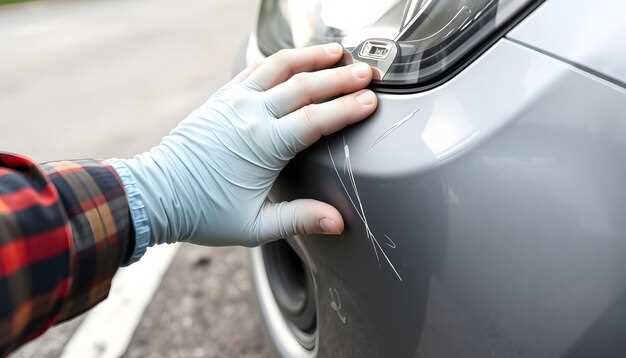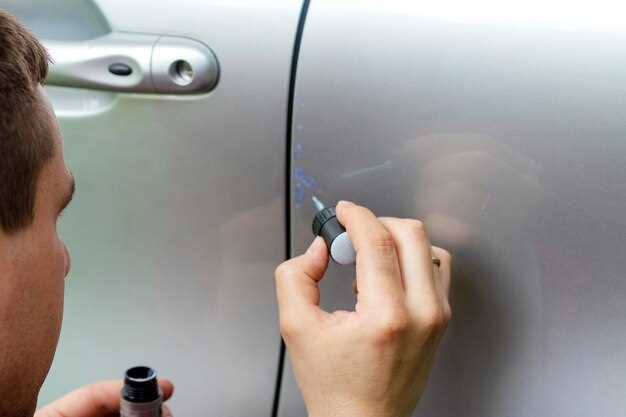

Dealing with small dents on your vehicle can be frustrating, especially when they impact the overall appearance. Fortunately, there are diy methods to tackle these imperfections without the need for expensive paint jobs. By utilizing paintless repair techniques, you can restore your car’s finish while saving both time and money.
This article will guide you through the process of fixing small dents at home, empowering you to take control of your car maintenance. With the right tools and a bit of patience, you’ll learn how to smooth out those unsightly dents seamlessly. Embrace your inner handyman and discover how easy it can be to execute a successful DIY repair.
From household items to specialized tools, the solutions are accessible to everyone. Whether it’s a minor ding or a deeper indentation, our step-by-step instructions will help you achieve professional-looking results without the need for paint. Say goodbye to costly services and hello to the satisfaction of a job well done!
Choosing the Right Tools for Paintless Dent Repair
When it comes to DIY paintless dent repair, having the right tools is essential for achieving optimal results without damaging your vehicle’s finish. The primary aim is to carefully manipulate the metal back into its original shape without the need for paint.
First, consider investing in a quality dent removal kit. These kits generally include a variety of specialized tools, such as picking tools, glue pullers, and tapping hammers. Each tool has a specific purpose, so it’s vital to understand how they function and when to use them.
Hammers and Dollies are crucial for shaping the metal. A lightweight tapping hammer allows for gentle adjustments, while a dolly provides a sturdy surface against which you can knock out the dent. Choose a hammer with a smooth face to minimize the risk of causing further damage.
Glue Pullers are particularly useful for larger dents. Using a hot glue gun, you can attach a pull tab to the dent and then use the puller to gently draw it out. Make sure to select a glue that holds well but can be easily removed afterward without leaving residue.
Lights and Reflection Boards play an instrumental role in paintless repair. Proper lighting helps you see the dent from various angles, making it easier to assess the damage and monitor your progress as you work.
In summary, choosing the right tools for paintless dent repair greatly influences your success. A combination of hammers, glue pullers, and adequate lighting will empower you to tackle small dents effectively, achieving a professional finish in the comfort of your home.
Step-by-Step Guide to Remove Dents with Household Items

Removing small dents from your vehicle can be accomplished easily with household items and without the need for paint. This paintless repair method is not only cost-effective but also allows you to maintain your car’s finish. Follow these steps to effectively remove dents using common items.
Step 1: Assess the Dent
Begin by examining the dent. Determine its size, depth, and location. Smaller, shallow dents are usually easier to repair than deeper ones. Ensure that the area around the dent is clean and free of any dirt or debris.
Step 2: Gather Your Materials
Collect household items that can help in the dent removal process. Common items include a hairdryer, aluminum foil, a pot of boiling water, and ice cubes or dry ice. You may also need a cloth or a soft towel to avoid scratching the surface.
Step 3: Heat the Dent
Using a hairdryer, heat the area around the dent for approximately 30 seconds. The heat will expand the metal, making it more malleable. Ensure you keep the hairdryer at least a few inches away to avoid damaging the paint.
Step 4: Apply Aluminum Foil
After heating the affected area, place a piece of aluminum foil over the dent. This will protect the paint during the next steps. Make sure to smooth out any wrinkles to ensure a tight fit against the surface.
Step 5: Use Boiling Water
Pour boiling water over the aluminum foil-covered dent. The heat will help further loosen the metal, making it easier to reshape. Be cautious while handling the boiling water to prevent burns.
Step 6: Apply Cold Treatment
Immediately after pouring the boiling water, take ice cubes or dry ice and place them over the area while it is still covered with aluminum foil. The rapid temperature change can cause the metal to contract and might pop the dent back into place.
Step 7: Inspect the Results
Carefully remove the aluminum foil after a minute and check if the dent has popped out. If the dent is still visible, repeat the heating and cooling process until the results are satisfactory.
Step 8: Final Touches
Once the dent is removed, clean the area with a microfiber cloth to remove any residue left from the aluminum foil or ice. If needed, apply a wax or polish to restore the shine and protect the finish of your vehicle.
This step-by-step guide provides an effective approach to paintless dent repair using items commonly found in your home. With a bit of patience and the right materials, you can restore your car’s appearance without costly professional help.
Preventing Future Dents: Maintenance Tips for Your Vehicle

Maintaining your vehicle properly can significantly reduce the risk of acquiring small dents. Here are some effective tips to help you protect your car’s appearance and avoid the need for paintless dent repair in the future.
1. Regular Washing and Waxing: Keeping your vehicle clean helps to prevent dirt and debris from scratching the paint and creating areas that may be more prone to dents. Regular waxing provides an additional layer of protection against minor impacts.
2. Parking with Care: Always choose your parking spots wisely. Avoid congested areas or spots close to shopping carts and other vehicles. If possible, park a bit further away from the entrance to reduce the risk of door dings and small dents.
3. Use Protective Covers: Investing in a quality vehicle cover can protect your car from environmental factors like hail, falling branches, and debris that can result in dents. This is especially important in inclement weather conditions.
4. Avoid Car Wash Brushes: Automatic car washes that use brushes can potentially cause scratches and may not catch dents. Opt for touchless car washes or wash your vehicle by hand using a microfiber cloth to minimize risks.
5. Be Mindful of Your Surroundings: When driving, remain aware of your environment. Avoid driving too close to construction zones or areas with heavy traffic, where debris and careless drivers may increase the risk of dents.
6. Maintain a Safe Distance: Maintaining a safe distance from other vehicles can prevent incidental damage. Ensure you have enough space to avoid being hit by doors or other objects when stationary.
7. Regular Inspections: Perform routine checks for any minor imperfections. Catching small issues early can help you address them before they turn into larger problems requiring paintless dent services.
By implementing these maintenance tips, you can protect your vehicle from future dents and keep it looking its best without needing to rely on DIY dent repair methods.






